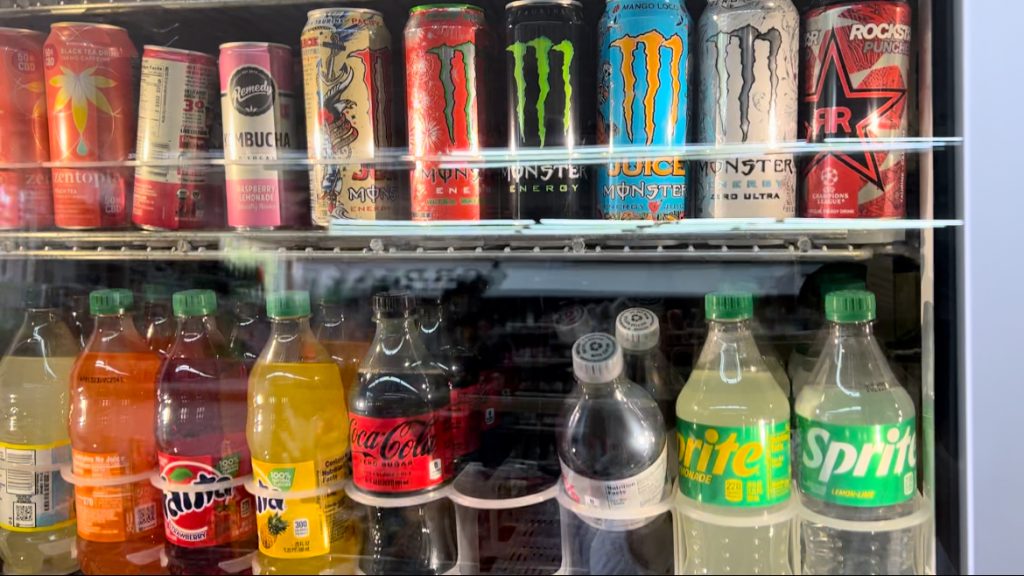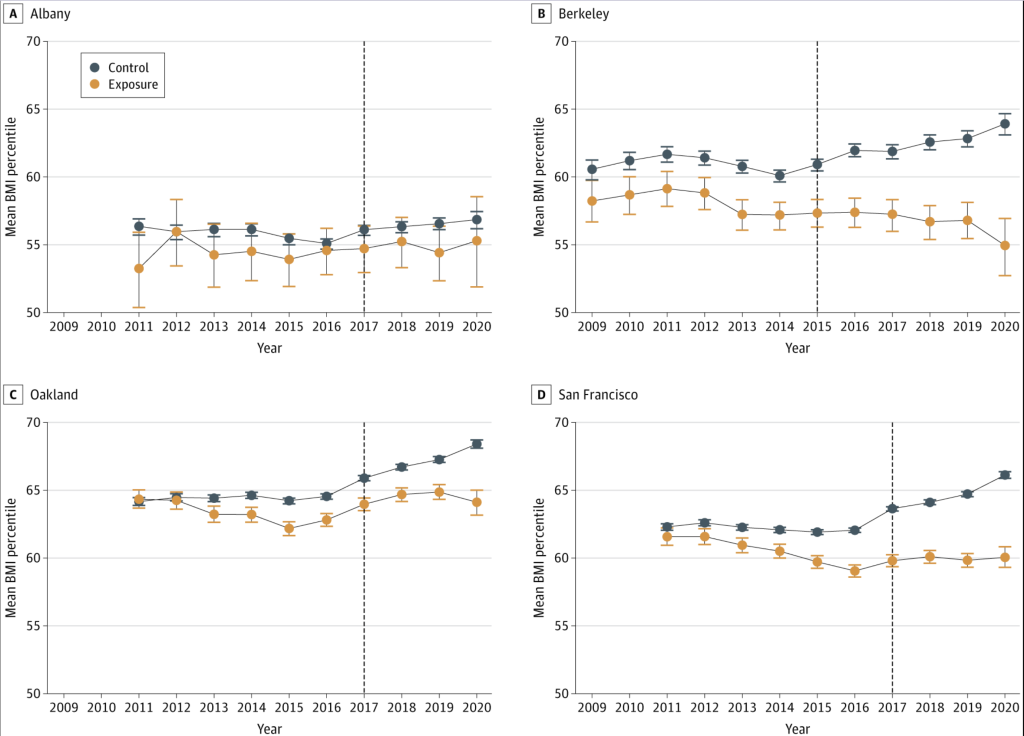
A new study found that four California cities that adopted a soda tax saw a significant decrease in Body Mass Index (BMI). BMI is used by doctors to measure the amount of body fat. The higher the BMI the greater the risk for diseases.
BMI decrease was especially significant for kids 12 and younger, White and Asian youth, and youth who are overweight or obese. Regardless of gender or race, Males and the obese also saw a significant BMI drop.
This Kaiser Permanente study was conducted from 2009 to 2020 for ages 2-19. It compared 44,000 youth from the four sample cities to 345,000 youth in control cities without a soda tax.
Aside from soda, Sugar-Sweetened Beverages (SSB) include energy, sports, and fruitflavored drinks; sweetened water, coffee, and tea; and syrups used to make SSBs. Nonsweetened drinks like diet soda are not taxed.
“Our results demonstrate that SSB excise taxes may be associated with lower BMI percentile and lower prevalence of obesity among youth.” (Kaiser Permanente study)
Since the 1990s, the world’s top soda slurpers like North America and Europe saw a frightening rise of sugar-related diseases like obesity, diabetes, heart disease, tooth decay, and cancer. This led to aggressive health policy changes and a growing health consciousness that now spurn sugary products.
To curb sugar consumption and bring down obesity, the Center for Science in the Public Interest have urged nations to impose taxes on soda and other sugary products since 2006.
Berkeley was the first US city to impose a soda tax in 2014. Since then, it had the most dramatic drop in BMI.
In 2016, the World Heath Organization (WHO) finally advocated for a 20% increase on the price of sugary drinks after strongly urging nations to limit daily sugar intake.
By 2017, the three other cities in the study— Albany, Oakland, and San Francisco, all imposed a soda tax.
A UC Berkeley study found that the soda tax increased SSB prices and reduced SSB sales by 33%.
With higher SSB prices after soda tax, demand for SSBs in one US city dropped, so stores decreased their stocks of SSBs and increased their stocks of water.
WHO limits sugar consumption from 6 to 12 teaspoons a day (about 25 to 50 grams). One 8-ounce Pepsi has about seven teaspoons (27 grams) of sugar while a 12-ounce soda typically has almost nine teaspoons (35 grams) of sugar.
Does a teaspoon make much of a difference??
WHO cited a Harvard study: each day you ingest a sugar-sweetened drink, you increase your chance of obesity and diabetes “regardless of initial body mass, diet, television-viewing habits, and physical activity.”
The average American drinks 39 gallons of soft drinks a year. So lowering daily sugar intake is a critical lifestyle change.
“When a healthy child eats the equivalent of 20 teaspoons of added sugar a day, 320 calories go straight into additional weight gain. Once a child has established this pattern of eating, it’s a very difficult rhythm to break,” WHO quoted the study’s researcher David Ludwig.
This year, WHO reports that worldwide adult obesity has more than doubled since 1990 while adolescent obesity has quadrupled.
Overweight and obesity are related to numerous non-communicable diseases (NCD) that hampers general productivity and burdens the state.
“Obesity costs the U.S. health care system nearly $173 billion a year.” (CDC)

California cities with soda tax: Albany, Berkeley, Oakland, San Francisco
— Ivy Lopez (@IvyDigest)
Ivy is a lawyer turned columnist who writes comedy on YouTube @HumorMeIvy.
.
.





